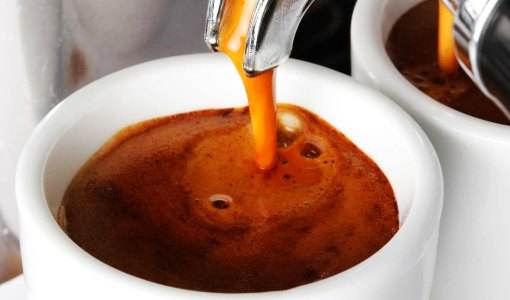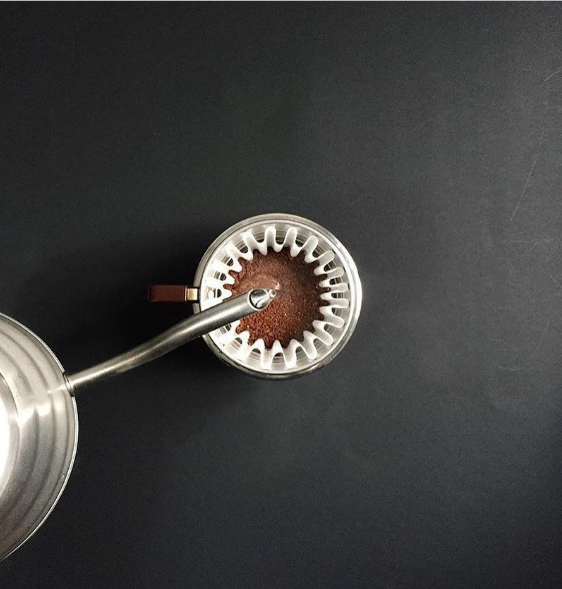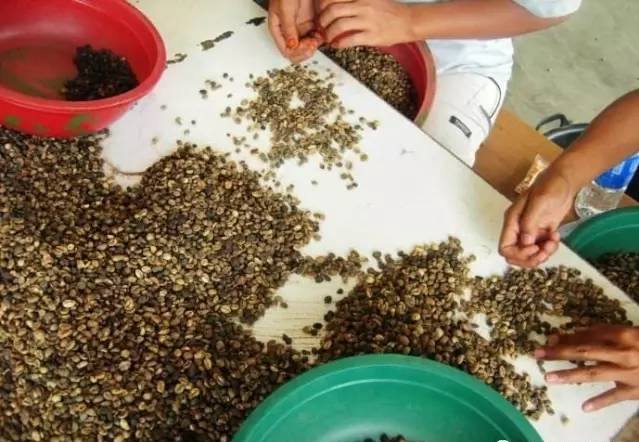Lift the mysterious veil of extraction and rich coffee
We have heard too many words like "I like full-bodied coffee" since childhood, and even we have said it ourselves. But what exactly do we mean by this, and is full-bodied coffee a completely different concept as baristas understand it? Let's go into science (I added the latter sentence myself).
Stupid, right? Don't worry, we'll tell you slowly what strong coffee is, what effect it has on your coffee, and how you can adjust it.
Get ready to lift the mysterious veil of coffee extraction and richness (more and more feel that the author is a special middle school boy)
Concentration, depth and fullness: what's the difference?
First, we need to understand the difference between "strong", "dark" and "rich" coffee.
Dark: this is what many people outside the coffee industry think of as full-bodied coffee. In fact, this is due to the deep roasting of coffee, which is similar to smoke and bitter taste.
Rich: this word is often used to describe many different things, from deep baking to heavy body. (so it also reflects the taste)
Strong: this is about the ratio of coffee extraction to brewing. Extraction refers to the soluble solids that we cook. When we brew, the soluble solids in the coffee powder will be moved to the water and dissolved. This is a very important concept because it has something to do with the flavor of our cup of coffee, and of course it sounds like an annoying chemistry class.

Let's study it in depth.
Extraction: how does it affect the flavor?
Different particle sizes will be extracted into the cup sooner or later. This determines the flavor of the cup-extraction affects not only the "strong" or "weak" of your coffee, but also its flavor performance.
Like every SCA standard, the best extraction rate is between 18% and 22%, although some people prefer an extraction rate of more than 21%.
In the process of extraction, the first thing that comes out is fruity and sour, which means that under-extracted coffee tastes particularly sour. Bitter taste and body came out a little later. And we have been pursuing a balanced cup of coffee, your brewing formula should be in order of extraction priority to achieve your desired flavor. In other words, if you like fruity coffee, please be careful not to extract too much. But if you like high-quality body, please make sure you don't stop brewing too early.
However, this does not mean that a coffee with a short extraction time is equivalent to a cup of bright, clean, bubbly coffee. There is another factor to consider.
Extraction: how to control it?
Extraction is determined by many factors, but the three most important factors are grinding degree, water temperature, and soaking time.
I talked to Alex Choppin, the finalist and Baratza technical expert of the British Cooking Competition, hoping to understand more. "my same extraction depends largely on particle size, water temperature and time," he said. Although there are many different factors, these three are the most important and will first affect the performance of a cup of coffee.
Here's how you can do it.
1. Grinding size
If you grind it thicker, the water will flow through the coffee faster. Then, of course, the extract will get less. At this point, you can say hello to a more sour cup of coffee. Similarly, finer grinding and narrower gaps between particles allow the current to stay longer, so it leads to more extraction, which leads to more bitterness.
For this reason, the uniformity of grinding is a very important factor, and if you grind it unevenly, some coffees will be extracted more than others, which means it's almost impossible to get the flavor you want.
At the beginning of my career, I used propeller blades to grind coffee. This is typical of uneven grinding, and it is also evident in the cup. After that, I changed the hand bean grinder, which changed my cooking state at home. And when I finally switched to an electric bean grinder, it made it even easier for me to learn about the relationship between grinding size and extraction.
How to find the perfect grinding size?
But when I started experimenting on the subject, a barista suggested that I grind out the size of the crude salt and then slowly adjust it down. Another barista gave me some samples of ground coffee powder to take home to compare my grinding degree. At the same time, another barista advised me not to go to the coffee shop to ask for the exact value of a bean grinder, because each grinder is unique-just like my Baratza Virtuoso has 40 adjustable gears, while the Baratza Sette30 has only 30 gears.
But remember, even if you like to brew coffee with one degree of grinding, it doesn't mean that the degree of grinding is suitable for all brewing methods, all coffee, or all recipes. I often use two different kinds of equipment for brewing development: Philharmonic pressure and hand flushing. My Philharmonic pressure requires short extraction time, low water temperature and finer grinding. But for hand punching, I'd like to use a medium grinding size.
But after you have a perfect degree of grinding for your own cooking, you may continue to play something different. For example, some big babies like to grind their coffee finely. This can improve some of the more mediocre coffee.
two。 water
If you are experimenting with the relationship between different cooking and grinding degrees, but you have not yet decided on your cooking, consider the following list of suggestions given to me by Alex.
"the water quality used in cooking, the eddy current caused by cooking, and the ratio of water to powder during cooking."
These three points are all related to water: water quality, eddy current, and proportion. To improve water quality, Alex proposes to use water filters, which are cheap and easy to use, and let you know the quality of the water you drink.
Eddy current is how coffee / water tumbles and interacts with each other. Here's a tip: injecting water on a concentric circle ensures a more uniform extraction as much as possible.
For the gouache ratio, the 1:16 ratio is usually used, such as 16 grams of water for 1 gram of coffee powder. Some bean grinders have built-in electronic scales (such as Sette 270W) (see here I'm starting to suspect that the author has been selling ads), making it easier to measure gouache ratio. If your bean grinder doesn't have this function, a kitchen electronic scale can easily do what you want.
When you have a certain degree of confidence in your basic self-brewing, you will be more motivated to find coffee that agrees with your own taste.
3. Extraction time
Just search the Internet and you can find a lot of baristas' suggestions for cooking recipes, all of which have different extraction times. But keep in mind that all factors are balanced, and a shorter extraction time will lead to more fruity and higher acidity. It gets poignant in too short a time. On the contrary, a longer extraction time can lead to a thicker body, knowing that the coffee becomes bitter.
As mentioned by Alex, eddy current also plays an important role in extraction. Some baristas stir during brewing to ensure that all coffee powder is in full contact with the powder. Other baristas do the opposite: they pay more attention to the size of the water they inject, hoping not to disturb the coffee powder layer during the injection.
Talking about the extraction rate is a very accurate way to discuss whether coffee tastes strong or weak. I admit that I lost confidence when I first tried to find the science behind the taste of the coffee I brewed in the morning, but finding my own favorite extraction ratio turned out to be my special experience. When you start to try different recipes and methods of brewing, you can only make the coffee taste better, and you will be more grateful for the flavor you experience.
I've found my perfect recipe. Now, every time I buy a new bag of coffee beans, I have a basic standard to make a perfect cup of coffee. So what are you waiting for? Start playing with your bean grinder and get ready to make your morning cup of coffee more wonderful.
Important Notice :
前街咖啡 FrontStreet Coffee has moved to new addredd:
FrontStreet Coffee Address: 315,Donghua East Road,GuangZhou
Tel:020 38364473
- Prev

Important processes for coffee extraction: steaming and pre-soaking
Pay close attention to the coffee comment (Weixin Official Accounts vdailycom ) and find that the good coffee shop opens its own shop, steams and pre-steaks are single-item hand-brewed coffee and esp in the first stage of extraction. Whether steams and pre-steaks are sufficient directly affects the taste of a cup of coffee. Although the two are applied to two kinds of coffee with different production processes, they have a very close relationship and interlinked principles.
- Next

Coffee treatment, wet planing
When it comes to Indonesia, you will immediately think of Mantenin, the tough guy in the coffee circle, which is characterized by low acidity, high mellow thickness, slight herbal flavor and woody flavor. Soil and water environment is an important reason that affects it, but what is more important is Indonesia's unique traditional coffee treatment method: wet planing. Before we explain the wet planing method in detail, let's review the structure of coffee. Embryo endosperm silver sheep
Related
- What is the meaning of lactic acid fermentation with coffee bean treatment?
- How to judge the state of foam by sound?
- How does the latte pull out the unicorn pattern? Come to get for a little trick to improve the flower pull!
- Will flower pulling affect the taste of the latte?
- Do you know the history of coffee?
- The difference between honey treatment and sun washing what is raisin honey treatment?
- What kind of milk can a novice use to make coffee foam to keep the foam longer? The correct method and skills of milking tutorial sharing
- Why do washed coffee beans taste sour? Flavor characteristics of washed Coffee
- Introduction to the skill of how to practice the size and height of water injection around the circle of hand-brewed coffee
- How do beginners practice coffee flower drawing from scratch?

